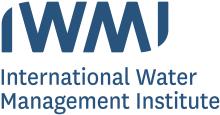Resource information
Many decisions on water allocation in river basins are made on economic grounds. Environmental and social benefits of water should also be considered in river basin management, and attempts should be made to value them similarly. This is not a straightforward task and very few studies have directly addressed this issue to date. In this paper, the Menik Ganga (River) in southern Sri Lanka is used as a case study to attempt and evaluate the costs and benefits of environmental water allocations, referred to as ?environmental flows? (EF). In this study, a broad definition of EF is used: the components of EF evaluated include the requirements of the religious festival, the requirements of the Yala National Park, the requirements of the Pilinnawa Coastal Wetland and the requirements of the Yala Fishery Management Area, off the coast. Almost all estimates are based on use values of EF such as marketed goods and recreation. For some components multiple estimates have been attempted. The religious EF requirement is estimated using the cost of alternative water supplies. The benefits of the EF requirement for the Yala National Park are estimated using the forgone value of tourism in the dry season and the benefits of avoiding the Human-Elephant Conflict. The Additional expenditure for the park in the dry season is also presented as another proxy estimate of the benefits of EF. The Benefit Transfer method was used for the Pilinnawa Wetland and grassland due to data constraints. The market prices of lobster and income of chank divers are used as proxies for the economic benefits of EF to the Yala Fishery Management Area. Finally, the cumulative value of the individual components is presented and discussed. The paper intends to stimulate discussion and further research on the complex subject of valuing the social and environmental benefits of water ? whether it is in the Menik Ganga, elsewhere in Sri Lanka or elsewhere in the world.



